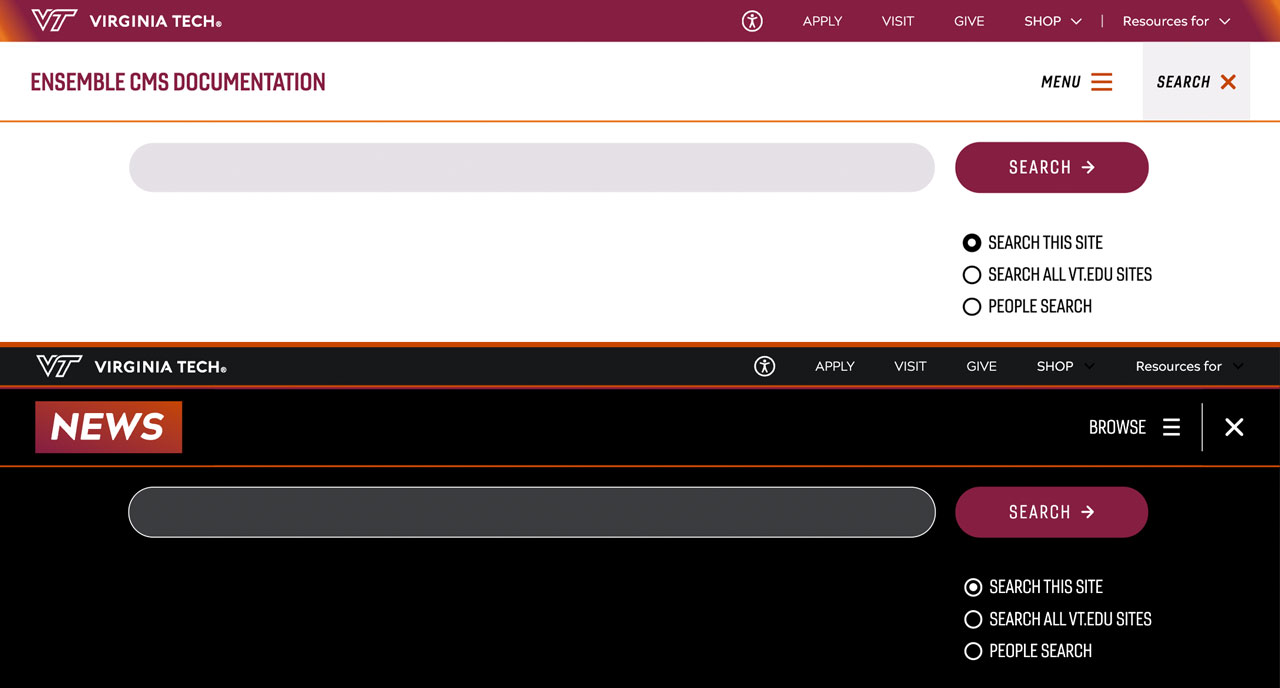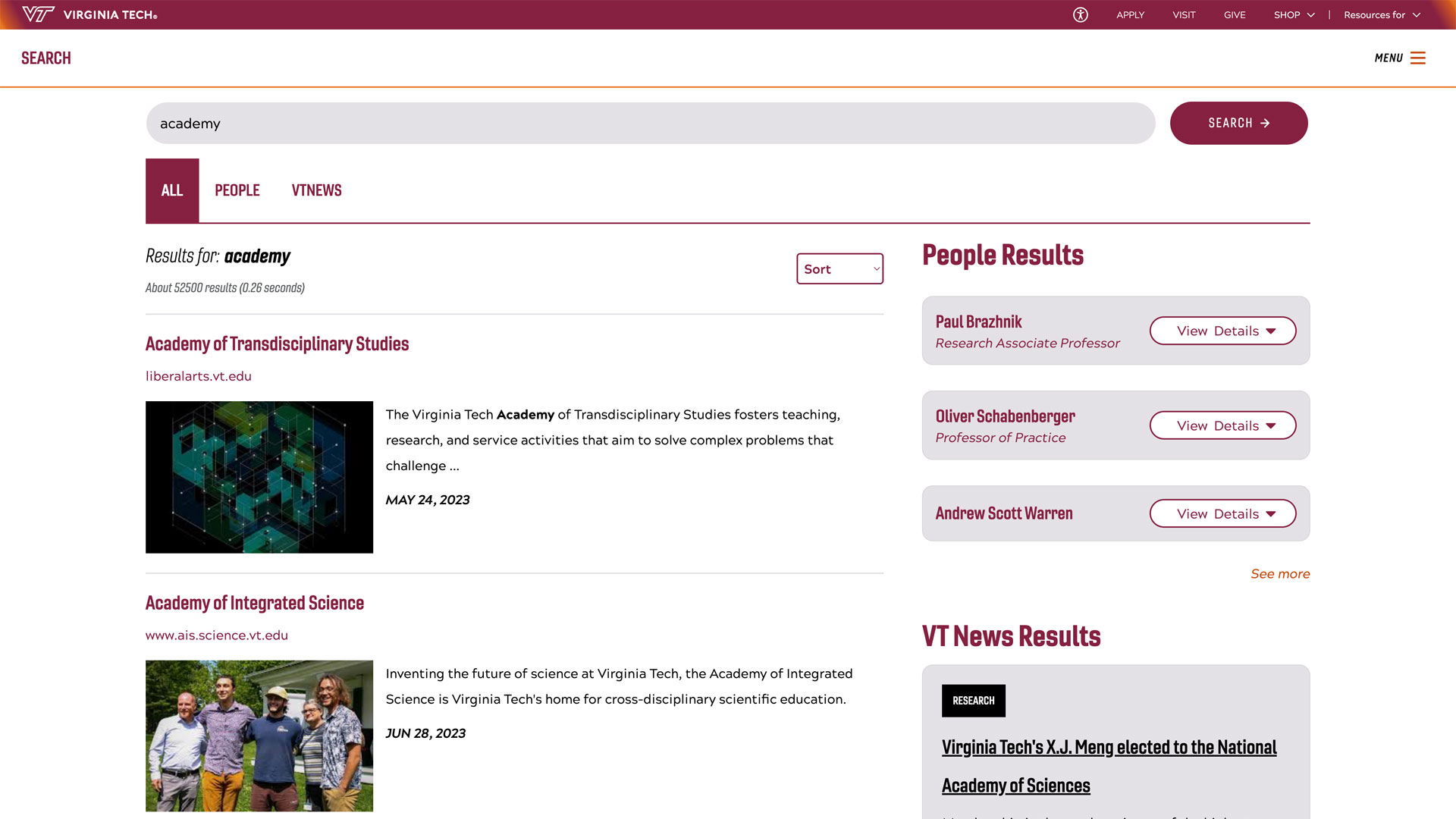Community-engagement champion drives transformative partnerships
Susan E. Short, associate vice president for engagement with Outreach and International Affairs, explains why the most meaningful collaborations strengthen both the university and the communities it serves.

In the dynamic space where academic pursuits meet institutional goals, Virginia Tech’s mission comes to life — not just in classrooms or labs, but in the real-world connections between campus and community. For Susan E. Short, associate vice president for engagement in Outreach and International Affairs, these connections aren’t just a responsibility; they embody the university’s very purpose.
“Two words define community engagement at Virginia Tech: Ut Prosim,” Short said, invoking the university’s motto of service. “It’s in our DNA.”
As Virginia Tech prepares for its reclassification as a community-engaged campus by the Carnegie Foundation and readies to host the 25th Annual Engagement Scholarship Consortium International Conference this fall, Short reflects on how the university’s partnerships have evolved. Community engagement at Virginia Tech is no longer just outreach — it’s a two-way exchange that strengthens both the university and the communities it serves, mirroring the institution’s expanding innovation network across the commonwealth.
Short, who earned her doctorate in community college administration from Virginia Tech in 1997, champions partnerships that go beyond service projects — relationships where faculty, students, and community members learn from one another to solve the most pressing problems. This approach reflects Virginia Tech’s land-grant roots and its commitment to making an impact where people live and work.
“There’s a growing recognition that higher education institutions should take discoveries into communities while simultaneously learning from those communities to shape future research,” Short said. “This is at the core of our land-grant mission and essential to our future.”
What distinguishes engagement from traditional outreach?
Authentic engagement represents a shift in how universities and communities collaborate. What was once primarily a one-directional flow of expertise from campus to community has evolved into something much more reciprocal and transformative. Communities bring invaluable perspectives and contextual knowledge that shape academic inquiry and problem-solving.
Our strongest partnerships involve faculty and students who approach communities with curiosity and respect, recognizing that the best insights come from the intersection of academic knowledge and lived experience.
How does our land-grant identity shape our approach to community engagement?
Through our motto, Ut Prosim, service is woven into the fabric of who we are. At the heart of this commitment stands Outreach and International Affairs, which takes the lead in carrying out the university’s efforts to be fully engaged with society, here and around the world.
I often visualize Virginia Tech’s land-grant responsibilities as a Venn diagram with three intersecting circles: teaching and learning, research and discovery, outreach and engagement. The most meaningful work happens where those areas overlap. OIA helps faculty extend their research beyond academic journals and into communities where it can make a tangible difference.
Likewise, we help communities, businesses, nonprofits, and governments form strategic partnerships with faculty to address societal, natural resource, and economic development challenges through collaborative research. The true essence of our work emerges in these moments of genuine reciprocity, where students find opportunities to serve community organizations while learning, and where community wisdom informs and transforms our academic enterprise.
This approach mirrors Virginia Tech’s evolving innovation network, which extends far beyond Blacksburg. From Virginia Cooperative Extension offices in every county to the Health Sciences and Technology hub in Roanoke, and from our global presence in Europe, Africa, and India to the newly opened Academic Building One in Alexandria, the university creates interconnected spaces where knowledge and community wisdom can flourish together.
From the Center for Autism Research’s work increasing access to services to underserved communities in Southwest Virginia to the Community Design Assistance Center’s commitment to help towns reimagine blighted spaces, we see engagement transforming communities — and our university — every day.
Why is the Carnegie classification for Community Engagement significant?
It’s important for Virginia Tech to be recognized alongside our peers for our commitment to community engagement. But beyond external recognition, the process of pursuing this classification offers us an opportunity for institutional self-reflection and growth. Since our last classification, we’ve grown significantly in how we approach community partnerships, and this process allows us to assess our strengths and identify new opportunities.
Most important, it highlights the extraordinary work being done by faculty, staff, and students. This is not just about documenting what we’ve done — it’s about envisioning what we can become as we deepen our engagement locally and globally.
This commitment aligns with the university’s Beyond Boundaries strategic vision, which positions Virginia Tech for 2050 with initiatives like Virginia Tech Advantage and Virginia Tech Global Distinction — both designed to expand our impact while staying true to our service-driven mission.

What does hosting the Engagement Scholarship Consortium conference mean for Virginia Tech?
Hosting this international conference affirms Virginia Tech’s leadership in community engagement. It’s a full-circle moment.
In the early years of the engagement movement, Virginia Tech hosted an Engagement Academy where teams from across the country developed strategic plans to implement at their home institutions. We helped plant seeds of engaged scholarship that have blossomed across higher education.
Now, as we welcome hundreds of engagement scholars, practitioners, and partners from around the world, we have the opportunity to showcase our own evolution while learning from others. The conference will feature presenters at all levels — from graduate students to senior university leaders — fostering a true exchange of ideas.
Virginia Tech’s leadership in engagement scholarship is evident in transformative partnerships such as the public-private collaboration between the university and Carilion Clinic in Roanoke. Recognizing that health challenges require expertise beyond any one discipline, we’ve helped create a model where medical knowledge and community needs intersect in meaningful ways.
I’m particularly excited about the opportunities this conference will provide for our graduate students and early-career researchers to present their work alongside established scholars. These connections have the potential to shape the next generation of engaged scholarship at Virginia Tech and beyond.
What excites you about the future of engagement at Virginia Tech?
The greatest opportunity ahead is co-creating educational experiences with community partners — ones that serve people at every stage of life, from children to seniors.
Universities possess extraordinary intellectual and creative resources, but these resources reach their full potential only when they are shaped by and accessible to the communities we serve. Engagement is not an add-on to Virginia Tech’s mission — it’s at the core of who we are and how we remain relevant.
I’m continually inspired by faculty members who recognize that their academic work is most meaningful when it connects with real-world challenges. When scholars engage deeply with communities, their research become more relevant, their methodologies more appropriate, and their findings more impactful.
Looking ahead, I see tremendous potential to further embed engagement as a defining principle of Virginia Tech. This isn’t just about maintaining our institutional reputation — it’s about fulfilling our profound responsibility as a land-grant university to be a catalyst for positive change.
The challenges of our time — climate change, economic inequality, public health crises — demand collaborative, boundary-spanning work. By bringing together the expertise of the university with the wisdom of communities, we create solutions that neither could achieve alone.
That’s what drives me every day. I’ve witnessed the transformative power of engagement — for students, faculty, and the communities we serve. When we embrace engagement not just as an activity but as a way of being, we honor Ut Prosim in its deepest sense.
Sign up for the Virginia Tech Engaged newsletter to learn more about how Hokies are working with and in communities across the commonwealth and around the globe.




